Cedar Shake Roofing: The Beauty That Demands Commitment to Safety and Maintenance
Cedar shake roofing offers unparalleled natural beauty and rustic charm that has captivated homeowners for centuries. However, beneath this stunning exterior lies a roofing material that demands significant attention to maintenance and fire safety considerations. Understanding these requirements is crucial for any homeowner considering or currently living with a cedar shake roof.
Essential Maintenance Requirements for Cedar Shake Roofs
Cedar shake roofs require comprehensive maintenance every 2 to 4 years, though some maintenance tasks should be performed more frequently. With proper maintenance, cedar shakes can last 20 to 30 years, while shakes can extend to 30 or even 40 years. However, without maintenance, cedar shakes typically remain functional for only 7 to 15 years, with shingles having an even shorter lifespan.
Regular debris removal is critical, as leaves, pine needles, and sticks must be cleared from cedar roofs to prevent moisture retention that breeds wood-destroying fungus, leading to expensive repairs and shortened roof lifespan. Professional cleaning of debris is recommended because cedar needs to breathe, and any accumulation of organic materials will affect its lifespan.
Trimming overhanging branches is essential maintenance that allows the roof to dry faster, reducing mold growth and decreasing the likelihood of tree damage or fire hazards. Professional power washing every few years is necessary for proper maintenance, though some sources caution against high-pressure washing that can damage the cedar’s protective oils.
Protective treatments including water and fire repellents, fungicides, and algaecides should be professionally applied every few years, with some treatments needing reapplication every 1 to 3 years. Regular inspection for cracks is vital, as cedar naturally expands and contracts with moisture and temperature changes, potentially leading to splits that require professional repair or replacement.
Critical Fire Safety Considerations
Perhaps the most significant concern with cedar shake roofing is fire safety. Untreated cedar shake roofs are naturally flammable and can increase fire risk, especially in dry or windy conditions in fire-prone areas. The spaces between shakes allow embers to penetrate and smolder undetected, with windblown embers posing the greatest threat during wildfires rather than direct flames.
Many states, cities, and counties have banned traditional wood shakes due to fire susceptibility, advising residents to find fire-resistant alternatives. Cedar shake roofs are no longer allowed in many locations, with Colorado being one example where most municipalities reject new installations due to fire risk in arid climates.
For homeowners who choose cedar, fire-retardant treatments are available. Fire-retardant-treated shakes undergo pressure impregnation with chemicals designed to reduce ignition potential and slow flame spread. Pressure-treated wood shakes can receive a Class A fire rating when installed with fire-resistant underlayment, with protection provided by impregnating fire retardant polymers into the wood’s innermost cells.
However, fire retardant treatments don’t last forever, as weather and UV exposure can degrade the protective layer, reducing effectiveness unless maintained according to manufacturer guidelines. Many installations lack required inspections or tests after installation to determine the fire retardant status.
Insurance and Building Code Implications
Homeowners in wildfire-prone areas may find that cedar shake roofs affect insurance coverage, with some companies increasing premiums or declining coverage for homes with combustible roofing materials. More municipalities and state agencies are updating building codes to improve fire safety, with some areas no longer allowing untreated wood roof coverings on new construction in wildfire zones.
Professional Maintenance Considerations
While homeowners can perform some cedar roof maintenance themselves, professional service is recommended for safety and proper execution, though this can be costly as maintenance is needed every couple of years. The maintenance required to ensure a natural wood roof lasts 30 years can cost nearly $1,000 every few years, plus repair expenses, making cedar shake maintenance both costly and time-intensive.
For homeowners in the Hudson Valley region seeking professional roofing expertise, working with an experienced Roofing Company in Carmel, NY can ensure proper maintenance protocols are followed and fire safety considerations are properly addressed.
Conclusion
Cedar shake roofing represents a significant investment in both beauty and responsibility. While these roofs offer unmatched aesthetic appeal and can last decades with proper care, they demand consistent maintenance, careful fire safety planning, and ongoing financial commitment. Homeowners considering cedar shakes must weigh the stunning visual impact against the substantial maintenance requirements and fire safety concerns. For those in fire-prone areas, synthetic alternatives that mimic cedar’s appearance while providing superior fire resistance may offer the best of both worlds – the beauty of cedar without the associated risks and maintenance demands.
